The NVIDIA GeForce GTX 980 Ti Review
by Ryan Smith on May 31, 2015 6:00 PM ESTNVIDIA's Computex Announcements & The Test
Alongside the launch of the GTX 980 Ti, NVIDIA is also taking advantage of Computex to make a couple of other major technology announcements. Given the scope of these announcements we’re covering these in separate articles, but we’ll quickly go over the high points here as they pertain to the GTX 980 Ti.
G-Sync Variable Overdrive & Windowed Mode G-Sync
NVIDIA is announcing a slew of G-Sync products/technologies today, the most important of which is Mobile G-Sync for laptops. However as part of that launch, NVIDIA is also finally confirming that all G-Sync products, including existing desktop G-Sync products, feature support for G-Sync variable overdrive. As the name implies, this is the ability to vary the amount of overdrive applied to a pixel based on a best-effort guess of when the next frame will arrive. This allows NVIDIA to continue to use pixel overdrive on G-Sync monitors to improve pixel response times and reduce ghosting, at a slight cost to color accuracy while in motion from errors in the frame time predictions.
Variable overdrive has been in G-Sync since the start, however until now NVIDIA has never confirmed its existence, with NVIDIA presumably keeping quiet about it for trade secret purposes. However now that displays supporting AMD’s Freesync implementation of DisplayPort Adaptive-Sync are out, NVIDIA is further clarifying how G-Sync works.
Meanwhile being freshly rolled out in NVIDIA’s latest drivers is support for Windowed Mode G-Sync. Before now, running a game in Windowed mode could cause stutters and tearing because once you are in Windowed mode, the image being output is composited by the Desktop Window Manager (DWM) in Windows. Even though a game might be outputting 200 frames per second, DWM will only refresh the image with its own timings. The off-screen buffer for applications can be updated many times before DWM updates the actual image on the display.
NVIDIA will now change this using their display driver, and when Windowed G-Sync is enabled, whichever window is the current active window will be the one that determines the refresh rate. That means if you have a game open, G-Sync can be leveraged to reduce screen tearing and stuttering, but if you then click on your email application, the refresh rate will switch back to whatever rate that application is using. Since this is not always going to be a perfect solution - without a fixed refresh rate, it's impossible to make every application perfectly line up with every other application - Windowed G-Sync can be enabled or disabled on a per-application basis, or just globally turned on or off.
GameWorks VR & Multi-Res Shading
Also being announced at Computex is a combination of new functionality and an overall rebranding for NVIDIA’s suite of VR technologies. First introduced alongside the GeForce GTX 980 in September as VR Direct, NVIDIA will be bringing their VR technologies in under the GameWorks umbrella of developer tools. The collection of technologies will now be called GameWorks VR, adding to the already significant collection of GameWorks tools and libraries.
On the feature front, the newly minted GameWorks VR will be getting a new feature dubbed Multi-Resolution Shading, or Multi-Res Shading for short. With multi-res shading, NVIDIA is looking to leverage the Maxwell 2 architecture’s Multi-Projection Acceleration in order to increase rendering efficiency and ultimately the overall performance of their GPUs in VR situations.
By reducing the resolution of video frames at the edges where there is already the most optical distortion/compression and the human eye is less sensitive, NVIDIA says that using multi-res shading can result in a 1.3x to 2x increase in pixel shader performance without noticeably compromising the image quality. Like many of the other technologies in the GameWorks VR toolkit this is an implementation of a suggested VR practice, however in NVIDIA’s case the company believes they have a significant technological advantage in implementing it thanks to multi-projection acceleration. With MPA to bring down the rendering cost of this feature, NVIDIA’s hardware can better take advantage of the performance advantages of this rendering approach, essentially making it an even more efficient method of VR rendering.
Getting Behind DirectX Feature Level 12_1
Finally, though not an outright announcement per-se, from a marketing perspective we should expect to see NVIDIA further promote their current technological lead in rendering features. The Maxwell 2 architecture is currently the only architecture to support DirectX feature level 12_1, and with DirectX 12 games due a bit later this year, NVIDIA sees that as an advantage to press.
For promotional purposes NVIDIA has put together a chart listing the different tiers of feature levels for DirectX 12, and to their credit this is a simple but elegant layout of the current feature level situation. The bulk of the advanced DirectX 12 features we saw Microsoft present at the GTX 980 launch are part of feature level 12_1, while the rest, and other functionality not fully exploited under DirectX 11 are part of the 12_0 feature level. The one exception to this is volume tiled resources, which is not part of either feature level and instead is part of a separate feature list for tiled resources that can be implemented at either feature level.
The Test
The press drivers for the launch of the GTX 980 Ti are release 352.90, which other than formally adding support for the new card is otherwise identical to the standing 352.86 drivers.
| CPU: | Intel Core i7-4960X @ 4.2GHz |
| Motherboard: | ASRock Fatal1ty X79 Professional |
| Power Supply: | Corsair AX1200i |
| Hard Disk: | Samsung SSD 840 EVO (750GB) |
| Memory: | G.Skill RipjawZ DDR3-1866 4 x 8GB (9-10-9-26) |
| Case: | NZXT Phantom 630 Windowed Edition |
| Monitor: | Asus PQ321 |
| Video Cards: | AMD Radeon R9 295X2 AMD Radeon R9 290X AMD Radeon HD 7970 NVIDIA GeForce GTX Titan X NVIDIA GeForce GTX 980 Ti NVIDIA GeForce GTX 980 NVIDIA GeForce GTX 780 Ti NVIDIA GeForce GTX 780 NVIDIA GeForce GTX 680 NVIDIA GeForce GTX 580 |
| Video Drivers: | NVIDIA Release 352.90 Beta AMD Catalyst Cat 15.5 Beta |
| OS: | Windows 8.1 Pro |


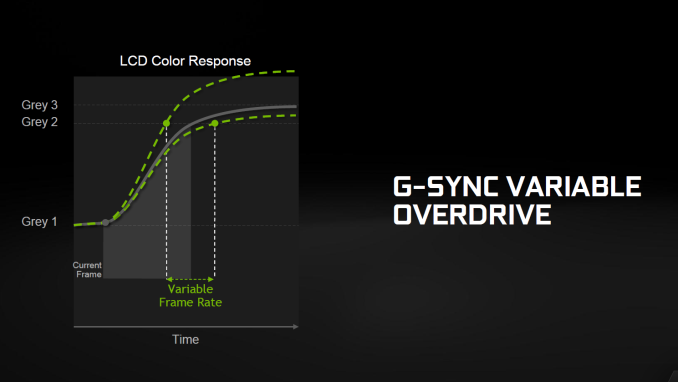
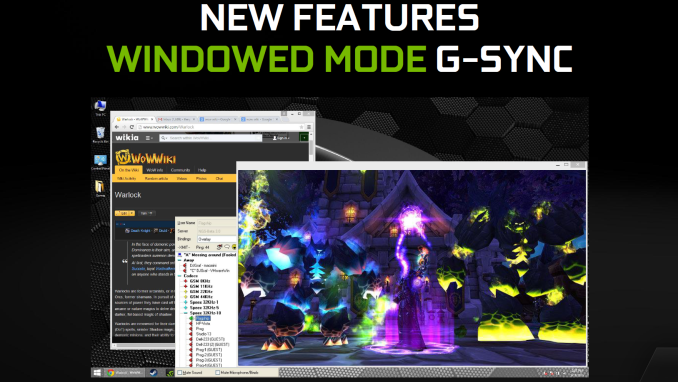
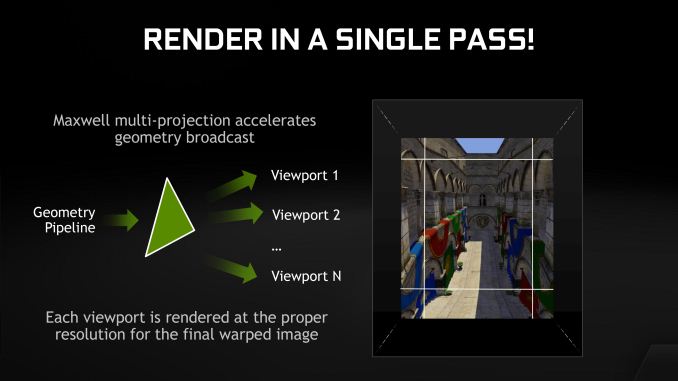
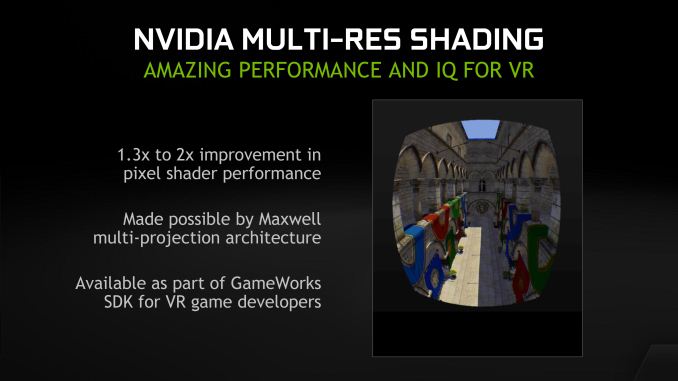
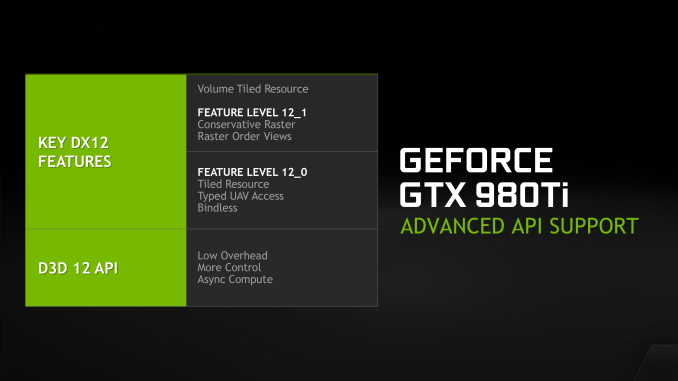








290 Comments
View All Comments
Casecutter - Tuesday, June 2, 2015 - link
Nvidia places the TitanX in play just so that logic works... But when you pull TitanX from the equation, and work from the 980 (GM204) a 20% increase in FpS for, almost 20% more money, and use 28% more power. It look really humdrum.Kutark - Wednesday, June 3, 2015 - link
You felt the need to post basically the same comment in 2 different places?Regardless you're cherry picking data. Overall its about a 30% increase in perf, for about a 30% increase in price. Its still a "good" deal if you want a powerful single GPU.
uglyduckling81 - Tuesday, June 2, 2015 - link
I'm still shocked at how much the 295x2 kills it. It's so much more powerful that even a Titan X. Newegg had the 295x2 on a sale for $550 2 weekends ago as well. Crossfire driver issues aside if your in the market for the high end I just don't see how you could go past the much more powerful and cheaper 295x2. If I had been in the USA with that $550 sale going I would of snapped that up so fast. Hell I would of bought several and sold a couple when I got home. Those cards are still $1600 in Australia.mapesdhs - Wednesday, June 3, 2015 - link
Really? CF issues aside?? It's a freakin' CF card! What the heck is the point in buying the thing if CF support just doesn't work properly for so many games? And did AMD ever fix DX9/CF issues? Still sucks the last time I tested 7970 CF. Feel free to whack your power bill with the 295x2, spew out heat, etc. Every time I see a crazy extended power usage graph just so the enormous line for the 295x2 can be included, it blows my mind that people ever bother buying it. One person from OZ here commented that heat output is of primary concern where he lives, so chucking out so much heat from a 295x2 would be a real problem. I noticed the same thing with 580 SLI, sooo glad I eventually switched to a single 980.CiccioB - Thursday, June 4, 2015 - link
The fact that a supposedly more powerful card is sold at a lower price should automatically raise you some questions... it is not that because 290x2 is a single card that all crossfire problems magically go away.Drive issue apart is not an option. Crossfire and SLI performances depend heavily on driver quality. And, sorry, but AMD dual GPUs cards have always been the worst choice since they were created.
See what is the support for 7990 cards. 690 cards are still supported as you can see in these very benchmarks.
Moreover, if you want a better dual configuration with support done as one would expect for the spent money, you can just buy 2x GTX970 and live much more happily. Consuming much more less. Dual GPU comparison here is not even to take into account. The simplicity, scaling and smoothness of a single GPU like Titan X or this GTX980TI simply crush the dual GPU competition without any doubt, even though they do some FPS less as average.
If you cannot understand that, it is right that you continue buying crappy cards and be happy with those.
NvidiaWins - Wednesday, June 3, 2015 - link
Compared to my Evga 770 SuperClocked Sli, it only generates a few extra fps, scored just over 100 points higher in Firestrike(770 Sli graphic score- 16,837/ 980Ti graphic score- 16,900), its a great single card at a cheap price point, but little improvement over what I currently use.Zak - Saturday, June 13, 2015 - link
Compare your dual 770 against dual 980ti and then we'll talk...godrilla - Thursday, June 4, 2015 - link
It seems that nvidia created the titan x just to make the 980ti seem like a bargain so that gamers will jump at it pretty clever.nadia28 - Thursday, June 18, 2015 - link
Yeah, that what I thought too. They keep thinking of new marketing strategies to boost the sales and this one works like a charm.CHRAHL - Saturday, June 6, 2015 - link
Ryan! We never saw a review from GTX 960, will it be published. And there is no data in bench from it hence. Could you at least upload performance to bench section..